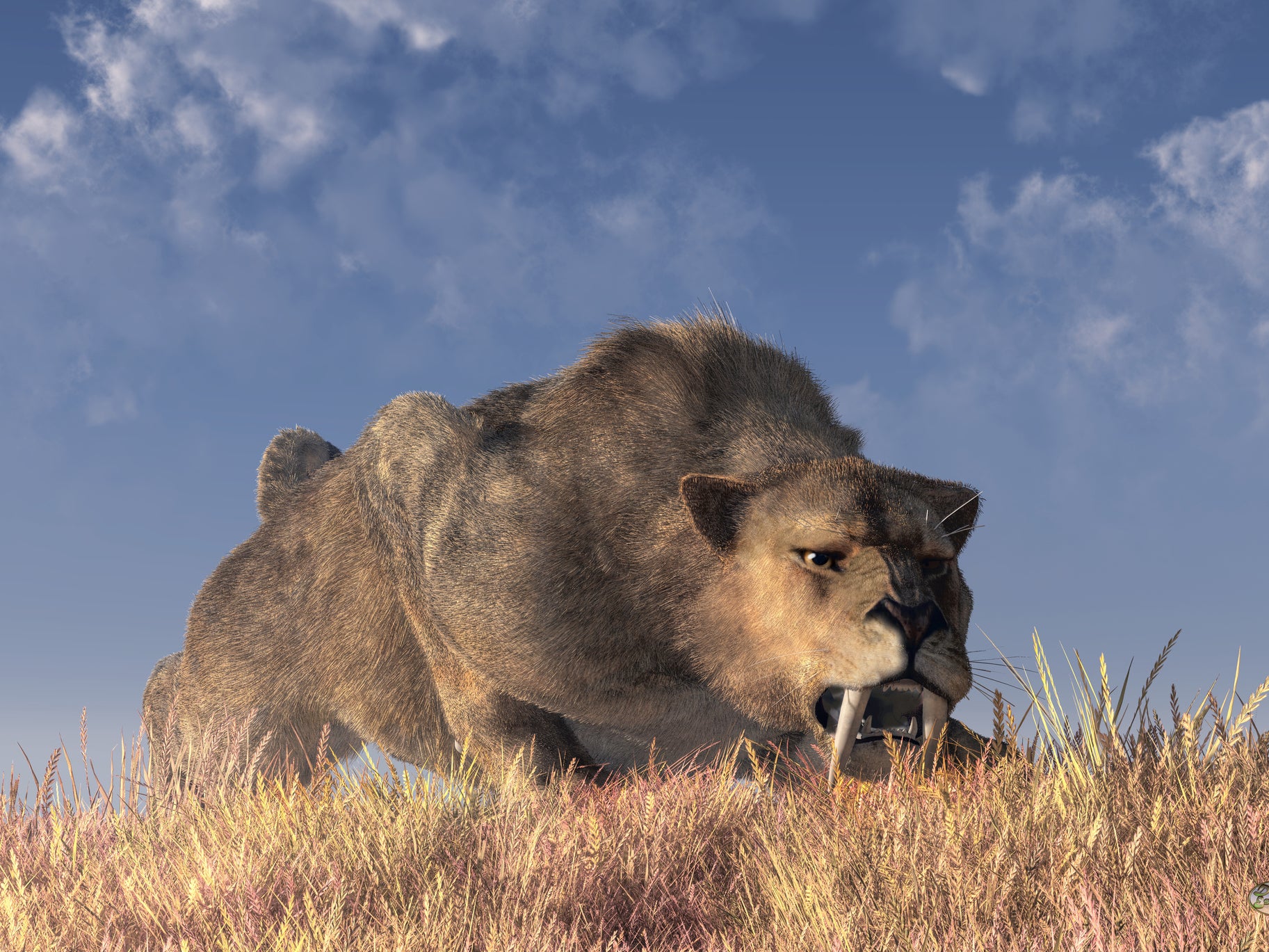Short-necked giraffes and saber-toothed cats roamed Europe two million years ago, fossil record reveals
Researchers examining Romanian fossils find multiple animals which hadn’t previously been found in the region before

Two million years ago, in the early Pleistocene era, as the early human species homo erectus emerged, the wildlife of Eurasia would have been spectacularly diverse, with an array of species which are now extinct.
In grasslands which stretched across countries including modern-day Romania, animals including bears, sabre-toothed cats, hyaena, rhinoceros, pangolins, short-necked giraffes, prehistoric pumas, a bird related to the ostrich, and even a large terrestrial monkey could have been spotted.
This new knowledge of the biodiversity in the region comes after a re-analysis of fossils from the unique fossil deposits found at the site of Grăunceanu in the Olteţ River Valley of central Romania.
Claire Terhune, associate professor of anthropology at the University of Arkansas, described the range of species which lived in the area as “awesome”.
She said: “It’s such a diverse faunal community. We found multiple animals that hadn’t been clearly identified in the area before, and many that are no longer found in Europe at all.
“Of course, we think these findings alone are interesting, but they also have important implications for early humans moving into the continent at that time.”
The researchers hope the fossils will provide clues about how and when early humans migrated to Eurasia from Africa.
Reconstructions of past environments like this also could help researchers better understand future climate change.
The site at Grăunceanu lies around 125 miles west of the Romanian capital Bucharest and is one of Eastern Europe’s richest fossil deposits.
Many Olteţ Valley fossil sites, including Grăunceanu, were discovered in the 1960s following landslides which were caused in part by deforestation due to increased agricultural activity in the area.
Archeologists and paleontologists from the Emil Racoviță Institute of Speleology, which studies caves, in Bucharest excavated the sites soon after they were discovered.
Fossils were recovered and stored at the institute, and scholarly publications about the sites flourished in the 1970s and 1980s. But interest in these fossils and sites waned over the past 20 to 30 years, in part because many records of the excavations and fossils were lost.
But since 2012, the international team, including Dr Terhune and researchers from Romania, the United States, Sweden and France, have focused on this important fossil region.
Their work, published in the journal Quaternary International, has included extensive identification of fossils at the institute and additional field work.
In addition to the species mentioned above, the researchers identified fossil remains of animals similar to modern-day moose, bison, deer, horse, ostrich, pig and many others. They also identified a fossil species of pangolin, which were thought to have existed in Europe during the early Pleistocene but had not been solidly confirmed until now.
Today pangolins, which look like the combination of an armadillo and anteater, are among the most trafficked animals in the world, and are found only in Asia and Africa.
Join our commenting forum
Join thought-provoking conversations, follow other Independent readers and see their replies
Comments